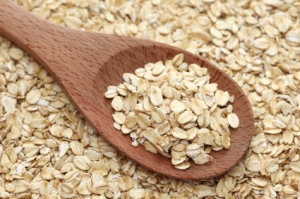Simple guidelines for making healthy choices.
 Happy New Year readers! Many people are currently flooding their local fitness centers and produce aisles, fueled by the motivation of the promises they’ve made to themselves to get healthier this year. As I’ve said in the past fitness is not simply exercising, it is a lifestyle and perhaps the largest part of that lifestyle is choosing the proper foods to include in our daily diets.
Happy New Year readers! Many people are currently flooding their local fitness centers and produce aisles, fueled by the motivation of the promises they’ve made to themselves to get healthier this year. As I’ve said in the past fitness is not simply exercising, it is a lifestyle and perhaps the largest part of that lifestyle is choosing the proper foods to include in our daily diets.
I wanted to use this post to share a few simple facts to guide you in structuring a healthy daily diet. The following guidelines should provide you with some basic fundamentals to get you going in the right direction. We’ll tackle some of the more complex issues in future posts.
First you should try to avoid starting your day off with nothing to eat or by consuming only simple carbs. As a general rule try mixing a protein with a complex carb (preferably an hour apart). Space your meals out every 3-4 hours. After all we are really designed to graze.
Simple Carbs are mainly sugars or highly processed complex carbs that can give the same affect. These can be used as instant energy prior to a workout. You’ll burn it up before you crash. Now, I’m not saying go eat a spoonful of sugar, but if there is a little sugar in a pre-workout drink so what! Any sugars and processed carbs, like white flour, act as simple carbs and are not good in abundance. General rule of thumb I like to follow is “the easier to grab and go food is (not including fruits) the more processed it is likely to be. For example, instant oatmeal has more of the affects of a simple carb than oatmeal that takes even a few minutes to cook.

Complex carbs are your grain products and some vegetables that the body converted into glycogen and are stored as an energy source in your muscle. These carbs are a sustainable energy source for your body.
You should be consuming about 1gram of protein per lb of lean body mass. If you are active in exercise and resistance training, you should be bumping that up to 1 1/2-2 grams per lb of lean
 body mass. Don’t try and eat your recommended amount of protein. Try adding in a supplement like a high quality protein powder to your diet.Proteins are used by our body to rebuild tissue. We tend to be a more protein deficient society because they have to be prepared and we see them as less convenient. Protein also helps to stabilize insulin levels in our bodies.
body mass. Don’t try and eat your recommended amount of protein. Try adding in a supplement like a high quality protein powder to your diet.Proteins are used by our body to rebuild tissue. We tend to be a more protein deficient society because they have to be prepared and we see them as less convenient. Protein also helps to stabilize insulin levels in our bodies.
A common balanced diet ratio is broken down as follows:
60% carbs 30% proteins and 10% fats.
For those calorie counters out there:
- 1gram carb = 4 calories
- 1gram protein = 4 calories
- 1gram fat = 9 calories
As I said this was meant to be a simple guide. Ultimately diets are simply an ongoing set of choices that we make everyday. Information allows us to make educated and informed decisions. So the question is: now that you’re better informed, what choices will you make today?
